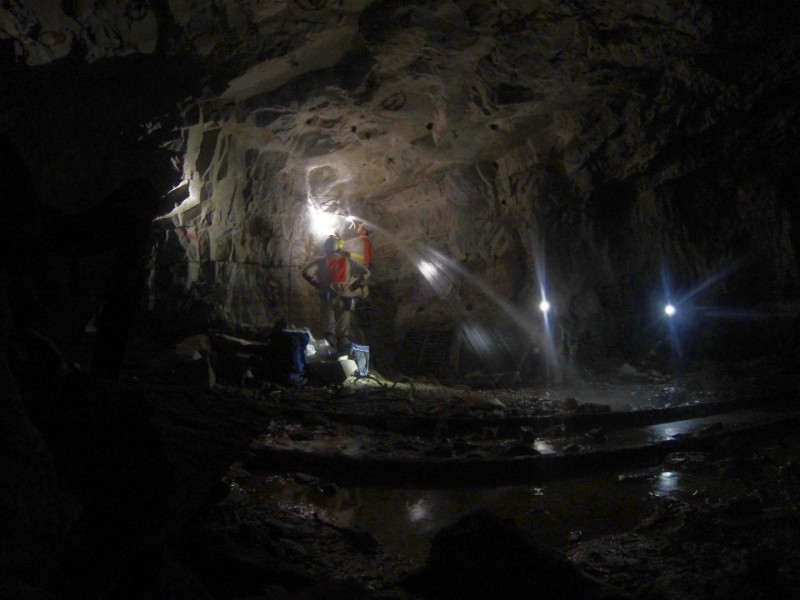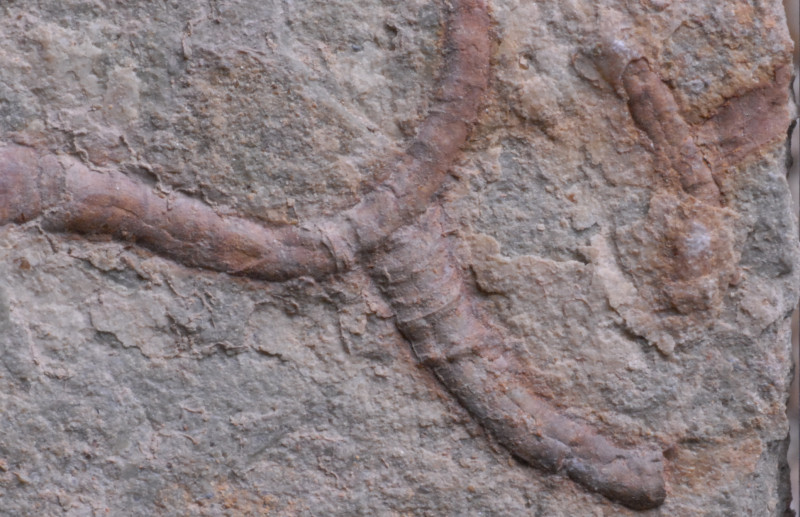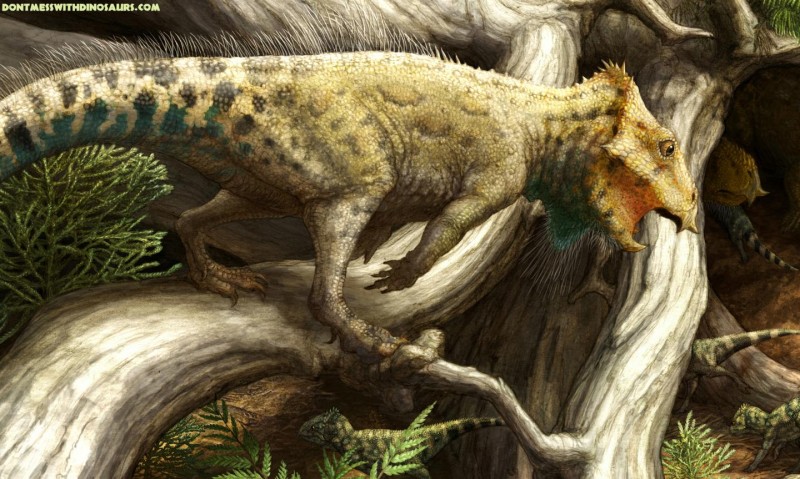A new genus and species of dinosaur from the Early Jurassic has been discovered in Antarctica. The massive plant-eating primitive sauropodomorph is called Glacialisaurus hammeri and lived about 190 million years ago.
The recently published description of the new dinosaur is based on partial foot, leg and ankle bones found on Mt. Kirkpatrick near the Beardmore Glacier in Antarctica at an elevation of more than 13,000 feet.
“The fossils were painstakingly removed from the ice and rock using jackhammers, rock saws and chisels under extremely difficult conditions over the course of two field seasons,” said Nathan Smith, a graduate student at The Field Museum. “They are important because they help to establish that primitive sauropodomorph dinosaurs were more broadly distributed than previously thought, and that they coexisted with their cousins, the true sauropods.”
The findings were published online Dec. 5 in the Acta Palaeontologica Poloncica. Diego Pol, a paleontologist at the Museo Paleontológico Egidio Feruglio in Chubut, Argentina, is the other co-author of the research.
Sauropodomorph dinosaurs were the largest animals to ever walk the earth. They were long-necked herbivores and include Diplodocus and Apatosaurus. Their sister group is the theropods, which include Tyrannosaurus, Velociraptor, and modern birds.
Glacialisaurus hammeri was about 20-25 feet long and weighed about 4-6 tons . It was named after Dr. William Hammer, a professor at Augustana College who led the two field trips to Antarctica that uncovered the fossils. Glacialisaurus belongs to the sauropodomorph family Massopsondylidae, which may represent a secondary radiation of basal sauropodomorphs during the Early Jurassic.
Currently, the development and evolutionary relationships of the sauropodomorph dinosaurs are hotly debated by paleontologists. This discovery, however, helps to resolve some of this debate by establishing two things. First, it shows that sauropodomorphs were widely distributed in the Early Jurassic-not only in China, South Africa, South America and North America, but also in Antarctica.
“This was probably due to the fact that major connections between the continents still existed at that time, and because climates were more equitable across latitudes than they are today,” Smith said.
Second, the discovery of Glacialisaurus hammeri shows that primitive sauropodomorphs probably coexisted with true sauropods for an extended period of time. The recent discovery of a possible sauropod at roughly the same location in Antarctica lends additional evidence to the theory that the earliest sauropods coexisted with their basal sauropodomorph cousins, including Glacialisaurus hammeri, during the Late Triassic and Early Jurassic, Smith and Pol conclude in their research findings.
Note: This story has been adapted from a news release issued by the Field Museum 2007













 January 11th, 2015
January 11th, 2015  Riffin
Riffin 
![Artist's conception illustrating the three-dimensional geometry of the plumbing (left) and timing of events (right column) at Eyjafjallajökull volcano in Iceland. The complicated plumbing inside the volcano consists of inter--connected conduits, sills, and dikes that allow magma to rise from deep within the Earth. The first three panels in the time series show distinct episodes of magmatic intrusions that caused measurable deformation and seismic events in 1994, 1999, and in the first several months of 2010. No eruptive activity occurred during this period of unrest. Each intrusive episode inflated a different section of the plumbing, drawn and modeled as sills at approximately 5 km depth. The fourth panel illustrates the first eruption, between 20 March and 12 April 2010, when basaltic magma (orange) erupted onto the Earth's surface on the flank of the mountain. The fifth panel shows the second eruption, between 14 April and 22 May, when a different type of magma (trachyandesite, shown in red), erupted explosively at the ice-capped summit (1600 m elevation). The interaction of magma and ice initially increased the explosive activity, generating a plume of particles that rose as high as the 30,000-foot flight level and disrupted air traffic across Europe for weeks. [show less] Credit: Illustration by Zina Deretsky, U.S. National Science Foundation](http://www.worldfossilsociety.org/wp-content/uploads/2014/12/picture-for-wfs5.jpg)


![This image shows fossil birds from the time of dinosaurs [left image: Eoenatiornis, right image: Hongshanornis] showing they had diverse types of legs. Credit: Roger Close](http://www.worldfossilsociety.org/wp-content/uploads/2014/12/picture-for-wfs3.jpg)


